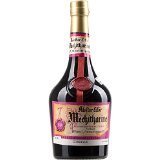News flash: A 70-year-old bottle of Armenian brandy was sold at Sotheby’s auction in London this November for (gulp!) 80,000 pounds. That’s more than $110,000 in American money.

I needed a shot just to perk back up to reality upon reading this blurb in a California newspaper. Yes, I read national and international news to keep up with the times and this brandy blurb more than caught my eye, not my taste buds.
I once tried a bottle of wine that sold for $10,000 at an auction and almost spit it out, it was that bad. I was doing a story on wines and this guy invited me to take a sip. Without knowing the difference, I would have taken day-old dishwater.
Now, the article goes on to say the auction was dedicated to the 50th anniversary of UK Prime Minister Winston Churchill’s death. People might want to think that the grimace caught on Churchill’s face by Canadian-Armenian photographer Yousuf Karsh was due to a cigar being snatched from his mouth.
Think what you’d like but I heard it from an unreliable source that it was due to a shot of bad brandy Karsh served up to the prime minister moments before clicking his shutter.
At the auction, Churchill’s favorite drinks, cigars, and clothes of famous brands were put up for bid. The 70-year-old brandy is from an exclusive collection of the Yerevan Brandy Factory located in the capital city of Armenia.
Two trips abroad resulted in a stop at this brandy factory. Nothing there compared to a bottle of Mechitharine I happened to consume during my days studying in a Vienna monastery.
The year was 1960 and I had taken a sabbatical from my studies at Boston University to increase my knowledge of Armenian language and history. It was a Catholic monastery run by the Mekhitarist Fathers and I was but 19 at the time—still a teenager on the cusp of drinking age.
My lessons at the monastery were well supervised, along with my social life. There were rules and restrictions. You were requested to abide by the laws of the priesthood, even though I was not a seminarian, just a student learning from the priests and seminarians.
Unbeknownst to me, it was a work-study requisite. You had to earn your keep. I was instructed to devote two hours a day to a task on the monastery grounds.
I could have done landscaping or housekeeping chores. I could have picked up a paintbrush or given tours to outsiders.
There was another option that sounded more enticing—pitch a hand in the distillery. That’s right, the monastery owned its very own manufacturing plant that produced the best-known liqueur throughout Austria and all of Europe, for that matter.
“You can work with Father Leo,” came the word from our abbot general. “It’ll free up one of the other priests for other matters. Father Leo will teach you the procedure.”
Work in a liqueur factory? Hey, this was up to my speed, or was it? Father Leo was a taskmaster. Nobody messed with protocol in his house. Since 1889, when Mechitharine was first introduced, its reputation toward perfection was not to be denied.
Let it be known this was no ordinary brandy or cordiale. It was coiffed as an aromatic herb liqueur, diligently prepared according to a secret recipe of herbs, roots, and fruits. The precise ingredients and recipe have remained a secret for more than 100 years, known by only 2 monks at a time. Truth be told, proceeds funded the order more so than book sales or any other financial medium.
Matter of fact, it’s still being produced today and sold commercially by these Mekhitarist Fathers at the abbey. Its roots go back in time even further than that, first mentioned in an Armenian manuscript dating back to 1680.
In the best Armenian I could muster, I reported for work the next day and discovered the drill. Mechitharine was produced in six flavors with various degrees of sweetness.
“I’m here to help,” I said, getting an apron in return.
For one whole year, I worked at this distillery like nobody else’s business, whether it was pressing the grapes or churning the vats. I’ll let you in on a little secret: Though it was against house rules, I did sneak a sample now and then, just to make sure I was on the right course.
This coming March, after 55 years, I shall return to this monastery in Vienna. Father Leo has passed, along with the others who instructed and inspired me in my education. I shall revisit the distillery, sample the contents, and greet the new masters of this exotic drink.
The secret will die with me.


TOm, beautiful story. I have tried and gifted many bottles of Mechitharine during my few years in Vienna.
i am in los angels where can i order this
where can i buy it